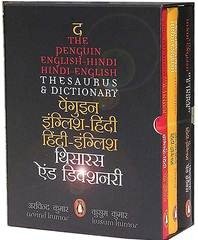Pressure cooking is the process of cooking food, using water or other cooking liquid, in a sealed vessel—known as a pressure cooker, which does not permit air or liquids to escape below a pre-set pressure. Pressure cookers are used for cooking food more quickly than conventional cooking methods, which also saves energy.
Pressure cookers heat food quickly because the internal steam pressure from the boiling liquid causes saturated steam (or “wet steam”) to bombard and permeate the food. Thus, higher temperature water vapour (i.e., increased energy), which transfers heat more rapidly compared to dry air, cooks food very quickly. They also greatly reduce the amount of energy used to cook a dish as the water is not boiling for a long period, once the target temperature is reached the only lost heat is through the surface of the pot or any venting that occurs. It is the most energy-efficient method of cooking.
Pressure cooking allows food to be cooked with greater humidity and higher temperatures than possible with conventional boiling or steaming methods. In an ordinary non-pressurised cooking vessel, the boiling point of water is 100 °C (212 °F) at standard pressure; the temperature of food is limited by the boiling point of water because excess heat causes boiling water to vaporize into steam. In a sealed pressure cooker, the boiling point of water increases as the pressure rises, resulting in superheated water. At a pressure of 1 bar or ~15 psi (pounds per square inch) above the existing atmospheric pressure, water in a pressure cooker can reach a temperature of up to 121 °C (250 °F), depending on altitude.
Pressure is created initially by boiling a liquid such as water or broth inside the closed pressure cooker. The trapped steam increases the internal pressure and temperature. After use, the pressure is slowly released so that the vessel can be safely opened.
Pressure cooking can be used to quickly simulate the effects of long braising or simmering.
Almost any food which can be cooked in steam or water-based liquids can be cooked in a pressure cooker.
History
A pressure cooker manufactured by Georg Gutbrod, Stuttgart, in about 1864
In 1679, French physicist Denis Papin, better known for his studies on steam, invented the steam digester in an attempt to reduce the cooking time of food. His airtight cooker used steam pressure to raise the water’s boiling point, thus resulting in a much quicker cooking. In 1681, Papin presented his invention to the Royal Society of London, but his invention was treated as a scientific study. They granted him permission to become a member of the society afterwards.
In 1864, Georg Gutbrod of Stuttgart began manufacturing pressure cookers made of tinned cast iron.
In 1919, Spain granted a patent for the pressure cooker to Jose Alix Martínez from Zaragoza. Martínez named it the olla exprés (literally “express cooking pot”) under patent number 71143 in the Boletín Oficial de la Propiedad Industrial.[1]
In 1938, Alfred Vischler presented his invention, the Flex-Seal Speed Cooker, in New York City. Vischler’s pressure cooker was the first one designed for home use, and its success led to competition among American and European manufacturers.[2] At the 1939 New York World’s Fair, National Presto Industries, known as the “National Pressure Cooker Company” at the time, introduced its own pressure cooker.
Variants
Large pressure cookers are often called pressure canners in the United States because of their capacity to hold jars used in canning. Pressure canners are specifically designed for home canning, whereas ordinary pressure cookers are not recommended for canning due to the risk of botulism poisoning, because pressure canners hold heat and pressure for much longer than ordinary pressure cookers and these factors are a critical part of the total processing time required to destroy harmful microorganisms.[3] An autoclave is a type of pressure cooker used by laboratories and hospitals to sterilize equipment. Pressure fryers are used for deep fat frying under pressure — note that ordinary pressure cookers are not suitable for pressure frying. In the food industry, pressure cookers are often referred to as retorts or canning retorts.
courtesy: WIkipedia


Comments